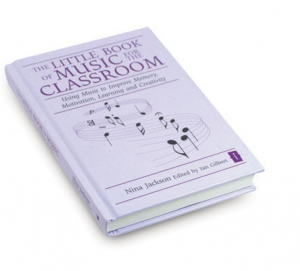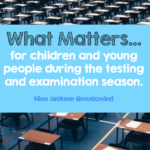We all get angry at some point. It’s a natural response to feeling frustrated, annoyed, deceived or upset. Being angry can sometimes mean we need help, direction or something needs to be changed.
Reasons why some children get angry in your lessons may include:
- Finding the work difficult
- Bringing a problem from another lesson
- Upset at home
- Personal turmoil with another teacher
- A cry for help because they don’t have personal coping mechanisms for some activities, especially if it means reading or talking aloud in front of others
- Being bullied, but don’t want to say anything
- Falling out with other children
- Lack of organisation with equipment, homework or getting to lessons on time
- Mental or emotional health problems
- Special Educational Needs & Disabilities
- Not being able to meet their own learning expectations
Ideas and strategies for your classroom.
Model calm behaviour even if the outburst is directed at you. Avoid arguing with the child, even if deep down that’s what you feel like doing.
Keep your voice quiet and be aware of your body language. Try not to cross your arms as this can be seen as defensive and may aggravate the situation even more.
To calm the situation down, tell the child that you can see they are angry and upset and will work with them to look at resolving the matter. Sometimes, children need that ‘extra little bit’ or reassurance that no matter what, you will help them feel better.
Don’t take words of anger as a personal attack. When a child is angry they may sometimes say things that will upset you which are unrelated to you. This could be a home issue and it’s their way of needing attention, or can be a cry for help. You may want to suggest that you both take a deep breath together to focus on what the real problem is.
Super supportive. Tell the child that you can have a quiet, private chat with them to see how you can help. If this is unusual behaviour then mention that this is out of character and you will be open to discussing why they are so angry. When having the discussion with the child, listen attentively without interrupting. Let the child know that getting angry at times happens to us all, but finding ways to manage personal anger is the key to getting over this so that any further outbursts like this don’t affect or disrupt the class.
Managing anger. For some children they will find coping with their own anger difficult as they know no other way of dealing with their emotions. Work with them to develop a plan that will help. Using the 5 to 1 countdown, traffic light option – tell the child that if they think they are getting angry, to let someone know before the anger light goes from amber to red.
Warning cards. Have a set of cards the child can use to let you know they are nearly ‘at boiling point’ or if there is a possible anger issue developing – this will help.
Check – Check – Check. With children who get angry because of work/learning difficulties, keep quietly checking, without making it obvious. Move in their direction, quiet supportive words, even a little thumbs up or a reassuring smile can alleviate an explosive situation. Never ever keep a child after class or during break if they haven’t finished the work because they couldn’t do it. This is asking for an angry response.
Distractions. For some children who do have anger issues or problems, ones that you are aware of, use tactical tools such as a doodle pad on the desk, blu-tak, clay or a soft ball of wool or similar to play with if getting angry. Get them to jot things in a journal, use music with headphones. I have a specific chapter on this in my book ‘The Little Book of Music for the Classroom’.

Time-out. For some children, walking away from a situation or leaving class (with your permission or with a TA/Support Assistant) is the best way of dealing with anger. If it’s a recurring pattern or a part of their Learning Plan or EHCP, may be they have a Tim-out card, if not make one for them. This could mean just being outside the door for a few minutes or removing themselves from a bad situation to somewhere else in the class.
Thumbs up. When a child calms down and has addressed the problem, make sure you acknowledge that in a way which doesn’t draw attention, but they know you have noticed how they’ve dealt with it.
Evaluate – Review – Consider. After a difficult outburst it is also a time where you will need to evaluate how you handled the situation. Take time to review your own response. If it went well and there was a good outcome, make sure you tell yourself that you are pleased with your actions. If not, then consider how or what you may do next time.
Always ask for support. We all need help and support and times. If you are unsure how to deal with a specific situation then seek help and guidance. It’s all part of learning about how to manage difficult situations. After all, we are all human and have emotional feelings. We too can get angry and upset and sharing it with someone else can often help.
Wind Ups. Don’t let children wind you up where you can get angry too. Remember that some children are testers. They want to see if they can press the wrong buttons and get a reaction from you. Without making light of the matter here’s a clip that will make you laugh but also has a serious side.
I do hope you’ve found some of these ideas helpful. I am off to learn the periodic table myself!
Super smiles
Nina Jackson @musicmind






Join the conversation